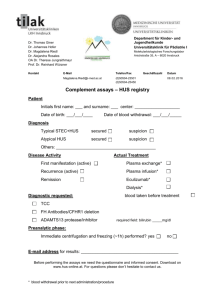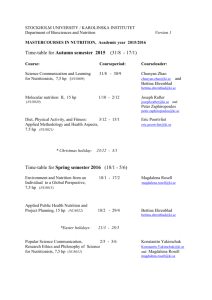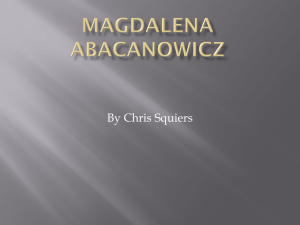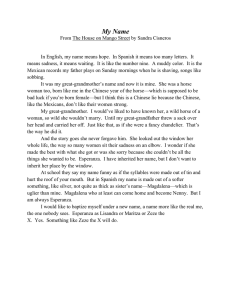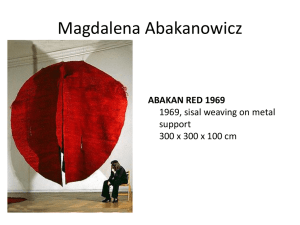Narrative Summary Interview with Magdalena Berry by Emma Wilson
advertisement
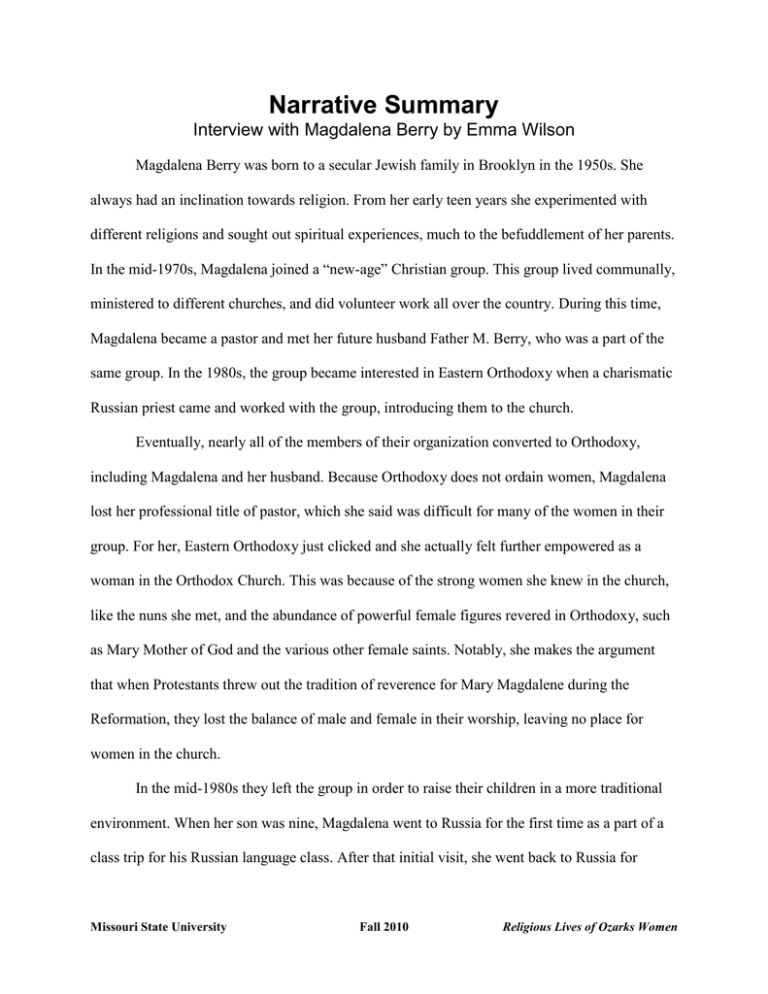
Narrative Summary Interview with Magdalena Berry by Emma Wilson Magdalena Berry was born to a secular Jewish family in Brooklyn in the 1950s. She always had an inclination towards religion. From her early teen years she experimented with different religions and sought out spiritual experiences, much to the befuddlement of her parents. In the mid-1970s, Magdalena joined a “new-age” Christian group. This group lived communally, ministered to different churches, and did volunteer work all over the country. During this time, Magdalena became a pastor and met her future husband Father M. Berry, who was a part of the same group. In the 1980s, the group became interested in Eastern Orthodoxy when a charismatic Russian priest came and worked with the group, introducing them to the church. Eventually, nearly all of the members of their organization converted to Orthodoxy, including Magdalena and her husband. Because Orthodoxy does not ordain women, Magdalena lost her professional title of pastor, which she said was difficult for many of the women in their group. For her, Eastern Orthodoxy just clicked and she actually felt further empowered as a woman in the Orthodox Church. This was because of the strong women she knew in the church, like the nuns she met, and the abundance of powerful female figures revered in Orthodoxy, such as Mary Mother of God and the various other female saints. Notably, she makes the argument that when Protestants threw out the tradition of reverence for Mary Magdalene during the Reformation, they lost the balance of male and female in their worship, leaving no place for women in the church. In the mid-1980s they left the group in order to raise their children in a more traditional environment. When her son was nine, Magdalena went to Russia for the first time as a part of a class trip for his Russian language class. After that initial visit, she went back to Russia for Missouri State University Fall 2010 Religious Lives of Ozarks Women 2 pilgrimages and general visits each subsequent year until the 2000s, when her children started going to college. In the 1990s, Magdalena and her husband moved with their children to Missouri to live in a house built by her husband’s great-grandparents. They moved to the property to take care of a cemetery that was built by his family in the later part of the nineteenth-century. It is dedicated to burying “paupers, slaves, and Indians.” Almost as soon as they moved in, they started holding worship services in their living room, and then in a small construction shed by the cemetery. The turnout was much larger than they expected, and they soon graduated to a larger shed. Adjacent to their house they built the small church building they now use. As the matushka, or “little mother” of the church, Magdalena plays a large role in the church community and works to minister with her husband, albeit in a more supportive capacity. Magdalena got her master’s degree at Missouri State University and has been an instructor in the university’s English department ever since. Missouri State University Fall 2010 Religious Lives of Ozarks Women
